Design Lessons From The French Riviera
How Jean Cocteau turned walls into whimsy and what we can learn from them
What would it be like to live inside a myth—surrounded by a dream? I imagine that's what it would feel like to step into Villa Santo Sospir on the Côte d'Azur. To be submerged in the murals of Jean Cocteau. To soak in his vibrant palette and gestural, mythic linework. It's as though Cocteau dipped his brush into the sea, the sun, and the spirit of the French Riviera, pulled out its soul, and painted it across the walls. His drawings capture something delicate and alive—lightness, magic, and imagination. I imagine being there would feel like living inside a storybook, like a world made entirely of whimsy.
Just a quick note that this post is too long for email, you can read the full story in the Substack app or your browser!
I talk a lot about whimsy in this newsletter—so much, in fact, that last week, I decided to rebrand. Connect With Your Creativity is now A Whimsical World. Because the more I write, week after week, the more I realize: I'm always seeking whimsy. It's the feeling of lighthearted delight that pulls me in, captures my attention, and forces me to slow down. Through whimsy, I can appreciate the strange beauty of this world.
The rebrand made me think about why I show up here and what this space means. I spend my days at LES surrounded by objects and stories, but this space is more personal. It's part journal, part creative excavation. I write to capture sparks—those fleeting, beautiful moments when something stirs. I write to find meaning, to make sense of things, to feel connected. I write because it helps me pay better attention to the world and my inner voice. Last week, I wrote about whimsy and narrative in product design. This week, I'm turning to the spaces we inhabit. How do we infuse our homes with imagination? With a sense of play? With stories?
Which brings me back to Jean Cocteau, who, along the sun-drenched Riviera, rejected the limitations of canvas and painted directly onto the walls of homes, chapels, and town halls. While we may not have the luxury of inviting the great artists of our time to paint our homes, we can still borrow from their spirit. We can weave story and whimsy into our own interiors.
A Creative Haven of Magic and Myth
The Côte d'Azur, in the post-war years, became a lively haven for the Parisian avant-garde. Henri Matisse, Picasso, and Jean Cocteau all spent time there. It was a place of joy, escape, decadent pleasure, and quiet retreat, but also of work. The art they made reflects a childlike delight in the natural world and the magic that hums beneath its surface. Their art feels like sand between your toes and the sun on your skin. There's a playful glint behind it all.
The region took on a mythic dimension, recognized and perpetuated by the artists who called the French Riviera home. Kenneth Silver, in Making Paradise: Art, Modernity, and the Myth of the French Riviera, writes,
"It was the status conferred on the coast by art– the tremendous quantity of works, made by scores of artists… that transformed the Riviera from a physical place into a site of imagination." The artists "turned geography into myth."
Picasso famously claimed that the ghosts of ancient myths haunted the area.
"It's strange, in Paris, I never draw fauns, centaurs, or mythical heroes…They always seem to live in these parts." 1
To him, these fantastical creatures were the native inhabitants of the area. To enter the French Riviera was to step into a world of myth and legend, and onto that dreamscape, these artists left their mark—forever entwined with the spirit of the Mediterranean.
Villa Santo Sospir
Villa Santo Sospir, perched on the cliffs overlooking the Mediterranean, was the summer home of Françine Weisweiller, cousin to one of Cocteau's actors. The eccentric pair were introduced in the spring of 1950 and immediately hit it off. That summer, the turreted villa nestled in Saint-Jean-Cap-Ferrat became Cocteau's canvas.
Though originally decorated by Madeleine Castaing, the walls were whitewashed and bare. Cocteau, compelled by the blank space, asked to draw a mural of Apollo, god of music, poetry, and art, above the fireplace. The results were so enchanting that Weisweiller invited him to do the entire home.
Cocteau recalled, "I was imprudent enough to decorate one wall, and Matisse said to me, 'If you decorate one wall of a room, you have to do them all.'"2
By the end of the summer, the villa was awash in a deluge of myth. Above the fireplace, a palette of cornflower blue, vibrant yellow, and ochre accents. The piercing fish-shaped eyes of Apollo gaze from a shock of hair that vibrates outward. Surrounding the mantel is a collection of objects: conch shells, pottery, and nooks bursting with books. It is a space where creativity comes alive.


Elsewhere in the house, Dionysus, Narcissus, Echo, and Diana dance across the walls, ceiling, and furniture. Scenes of Olympus unfurl with linework that feels loose, lyrical, and full of irreverent joy. Cocteau occasionally writes on the walls as if they were his personal notebook.
He once claimed, "Poets don't draw. They unravel their handwriting and then tie it up again differently."3
In a documentary, Cocteau describes the villa as
"another world, a world in which it is indispensable to forget the one in which we live." 4
In his gestural, lilting, and haphazard way, Cocteau brought Villa Santo Sospir to life. The lasting feeling Cocteau's work leaves is one of happiness, joy, the sun on your face, and the salt in your hair.
Villefranche-sur-Mer
Just down the coast, in Villefranche-sur-Mer, Cocteau transformed a humble fisherman's storage shed into the Chapelle Saint-Pierre. Biblical parables are interwoven with the stories of life in Villefranche. Tales of gypsies, fishermen, and many of Cocteau's friends are painted in a dreamlike tableaux that feels part-surrealist fairytale, part Mediterranean daydream
The Chapel exudes an exotic playfulness. Cocteau once remarked that "the mechanics of beauty are secret," and coming upon the facade, one imagines that it might hold a part of that mystery. Inside, two totemic figures preside—eyes floating atop elongated noses and softly closed lips. Will those lips speak the secret of beauty? They are forever shut, but the eyes that appear throughout the cartoonish biblical scenes seem to know.
Cocteau was invited to paint the wedding room in the Menton town hall the following year. The space is decadent: red velvet chairs, leopard carpet, wrought iron fixtures—and every inch of wall covered in color. Centaurs and pagasi leap through scenes of devotion and myth, alive with fantasy. The focal point is a Menton couple gazing lovingly at each other under the bright Mediterranean sun. The man with Cocteau's signature fish eye. His beloved Orpheus and Eurydice appear, framed by swirling lines, arabesques, and neoclassical symbolism. It is, quite simply, a place where love and imagination collide.
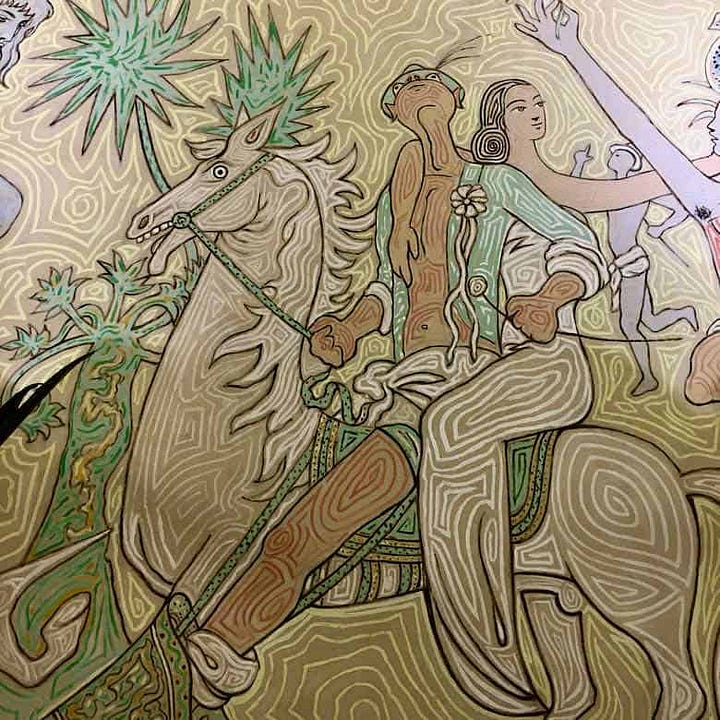
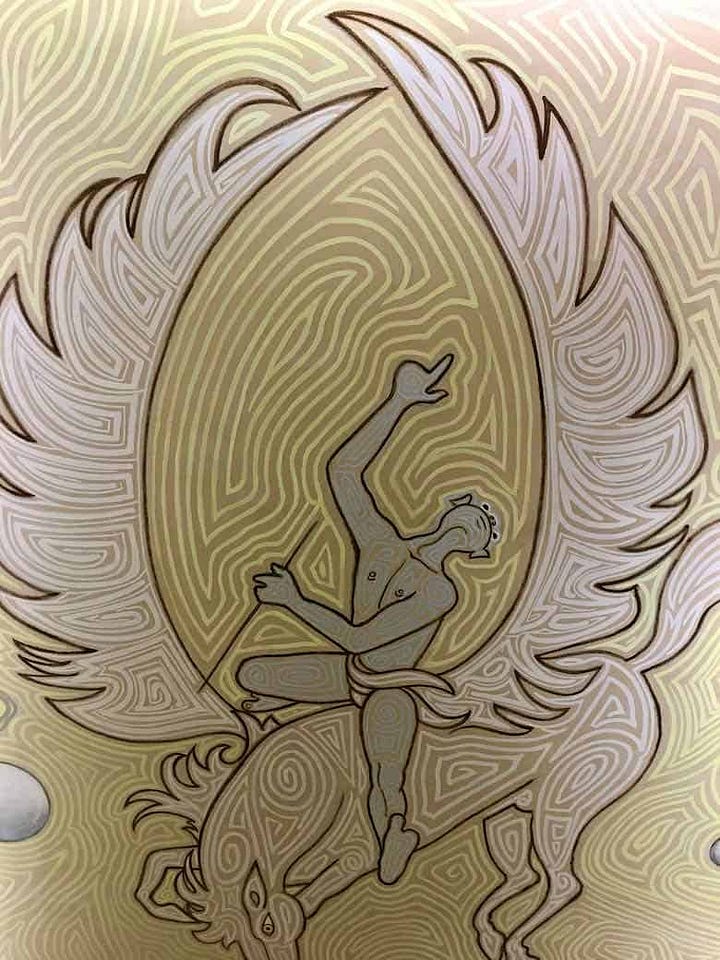
A Lesson In Imagination:
Cocteau approached these projects with urgency and joy. The murals feel spontaneous as if they were poured out of him all at once. They're whimsical, weird, and utterly alive.
David Salle once said, "As with all effective art, the greatness is partly a matter of the imagination behind it and partly a matter of style."5
Cocteau had both. His style followed the spirit of the Riviera—sunny, symbolic, and full of delight. These spaces were never just decorated. They were enchanted.
And that's the lesson: this is what we should strive for in our interiors. Not perfection. But presence. Not trends. But joy. A home should reflect a life lived—filled with stories, surprises, and things that make us feel. We bring art into our homes because of how it moves us, because it turns our everyday spaces into places of wonder.
Cocteau knew that. He gave up the canvas and brought the walls to life.
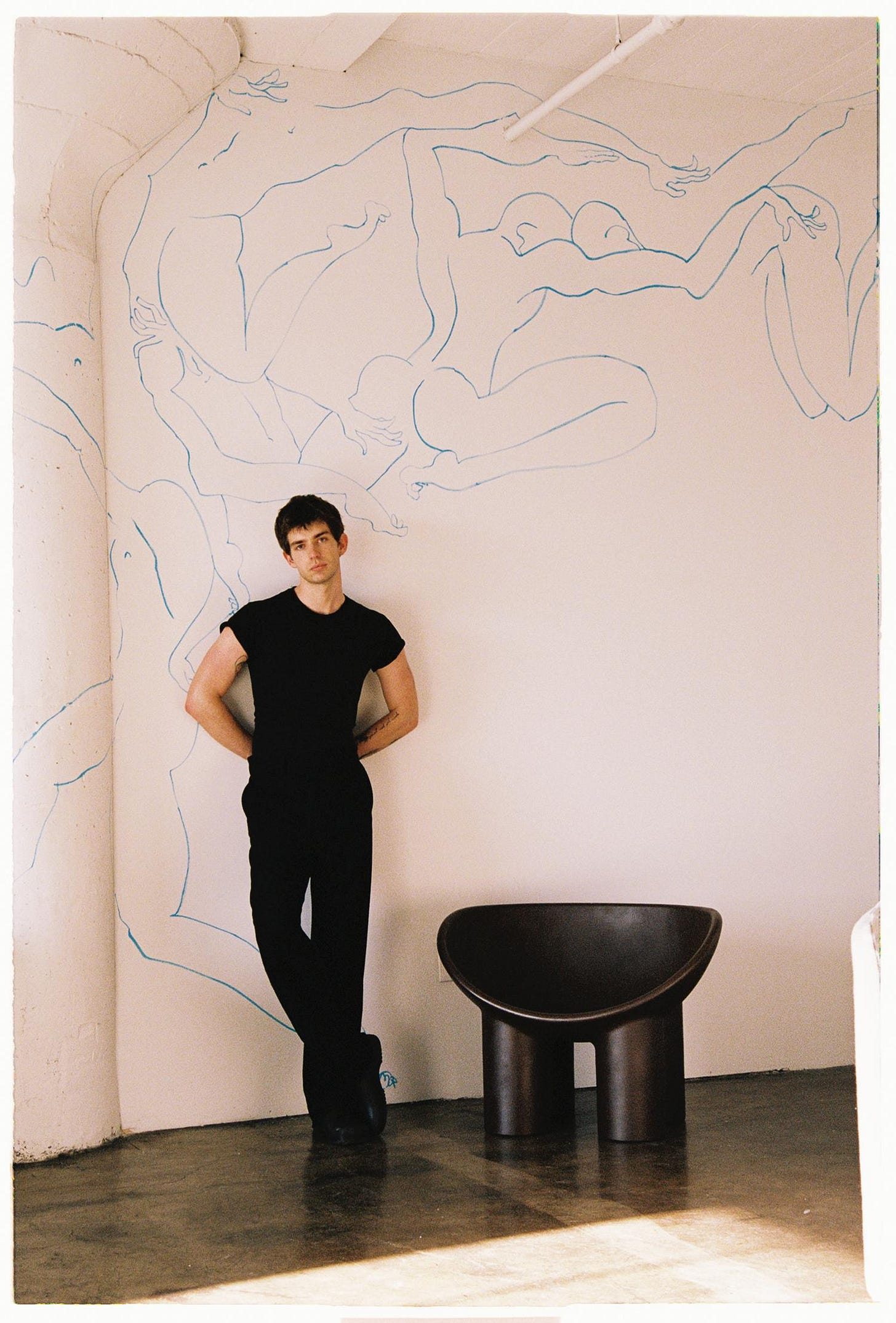
Some Practical Tips:
So, how do we bring that spirit into our own homes? Start with the things that stir something in you. Pieces that evoke a feeling you want to capture, a memory you want to remember, or a story you want to tell. Objects that delight. Here's a list to get you started:
Something with a story
This could be anything from a photo to a trinket; the memory could be in acquiring the object itself, or the object could spark the memory. The important thing is that you look at that object and remember something about it.
Something from nature
Having something from nature in our homes — whether it's a shell, a stone, a piece of driftwood, a plant, or even natural materials like linen or clay — grounds us and calms our nervous systems. Nature is often the best source of inspiration.
Something handmade
Bonus if you made it, or if it's by a friend or an artist whose story resonates with you
Something drawn or painted
There's something about a hand-drawn line or a brushstroke that brings a space to life. Maybe it's the imperfection—the little wobble of a pencil, the looseness of a gesture, the energy left behind by the artist's hand. It invites spirit and spontaneity into your space.
Something with color
Color speaks to us in a way words can't. It's visceral and emotional; it can energize, soften, ground, or uplift. It can make a space feel more alive, more layered, and more you. It doesn't have to be bright or bold. It just has to make you feel.
Some kind of collection
Collecting is a meaningful way we tell our story. It is a statement of what we are drawn to, of what delights us. Being surrounded by those things is important.
Books—always books
Because books are filled with stories and imagination, and we all need more of that.
Our homes deserve to be whimsical worlds. So make space for imagination.
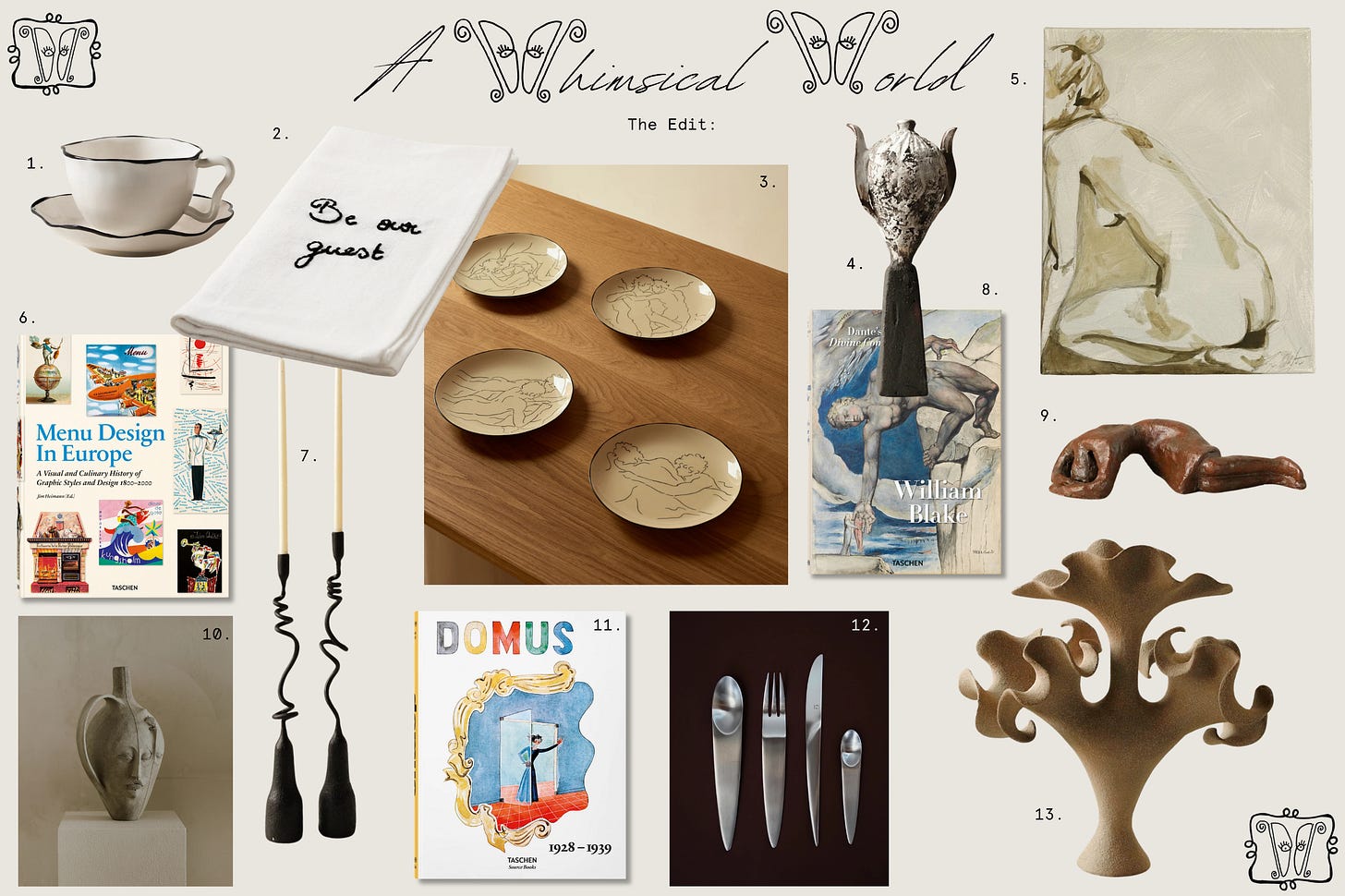
That’s all for today! Thanks for reading!
If you liked this, please share it with a friend, leave a comment, and subscribe! For more creativity, you can follow us on IG and explore years of art and design articles on the LES Journal
Keep Reading…
What Alessi's Tea And Coffee Piazzas Can Teach Us About Narrative Design
Human hands, cast in silver, reach from nowhere—fingers curling around a perfectly polished rectangular tray. Perched atop: a curious family of objects, seemingly in conversation. Each piece has its own fantastical personality. Their sleek surfaces contrast with richly detailed ornamentation—a round lidded bowl with ears, strands of hair braided into ha…
The Flattening of Design
My introduction to design began with swaths of color. My first apartment was the second floor of a late 19th-century Tudor in downtown Rochester. The living room was painted mustard yellow, the dining room was a rich ruby red, and the office and bedroom were cornflower blue. The kitchen? Amber, a black line, and then a deep green with teal tile and waln…
Cool Things Vol I
Last week, I wrote about The Erbario Manuscript. Images I have been obsessed with and return to again and again. They've shown up in team presentations, many mood boards, and just about every corner of my imaginative thinking. They are extraordinarily cool. Noticing what sparks delight has become one of my most important creative tools. So I keep a runn…
The above two quotes are from Making Paradise: Art, Modernity, and the Myth of the French Riviera by Kenneth Silver
Jean Cocteau: The Juggler’s Revenge by Kenneth Silver
How To See, by David Salle





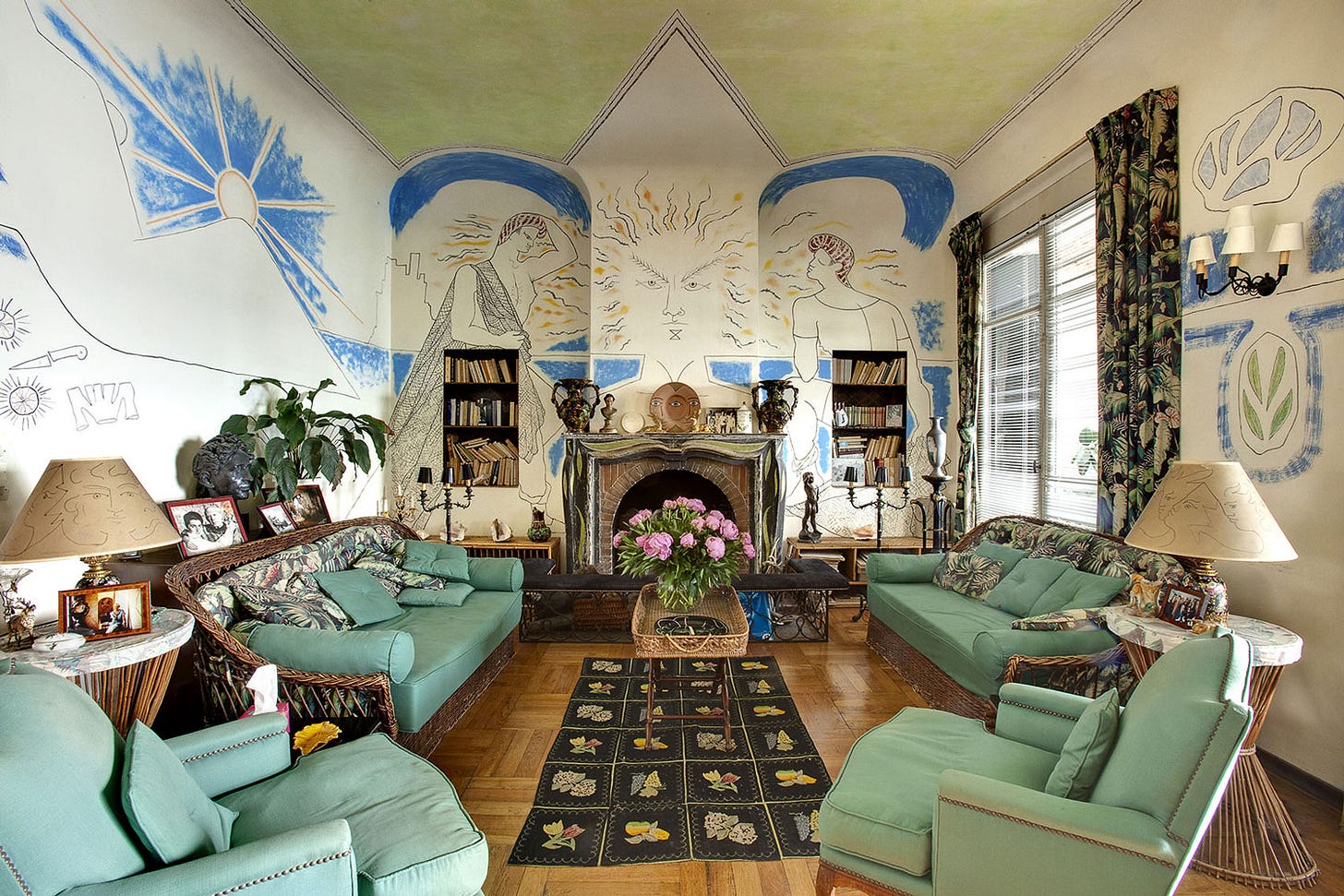

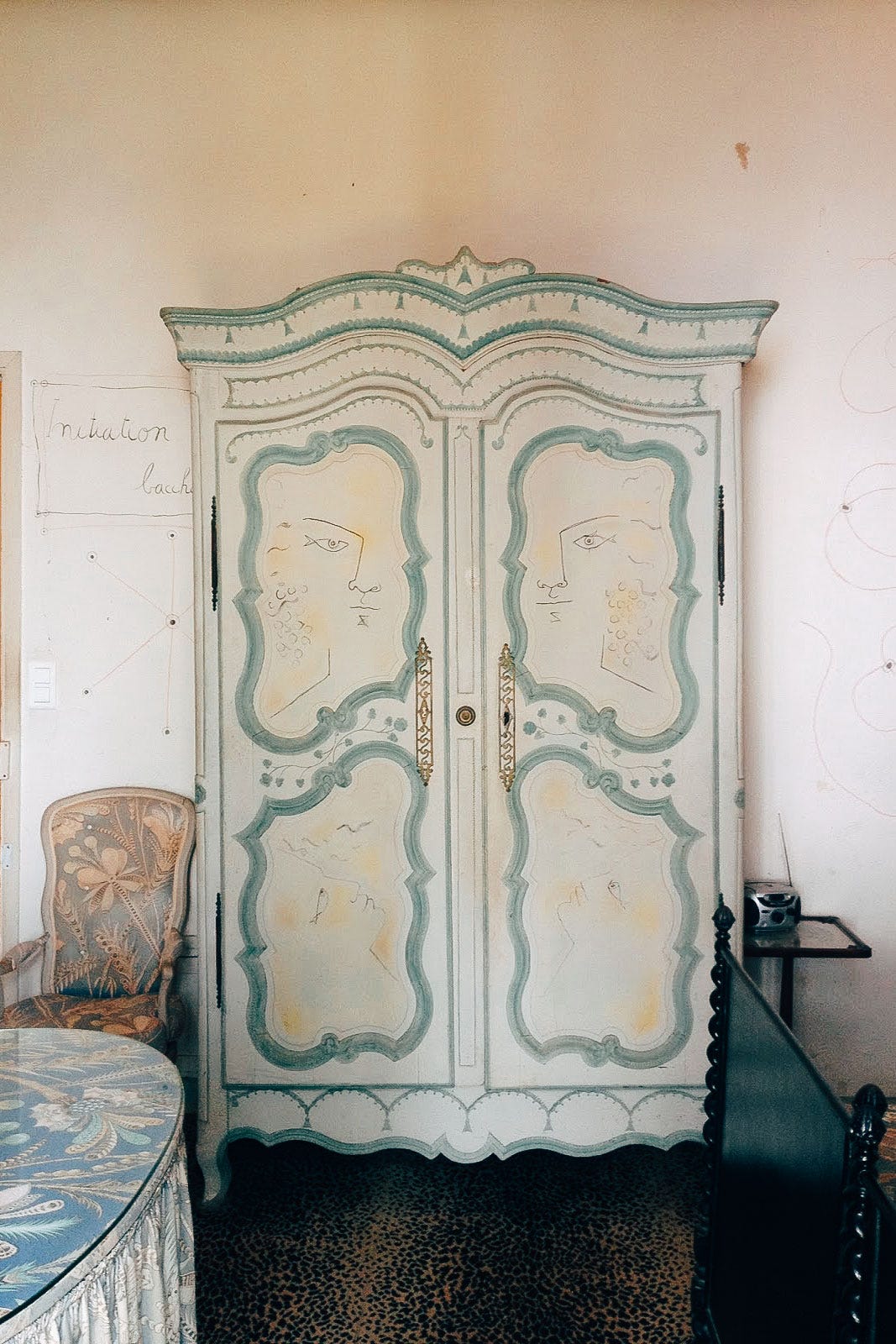
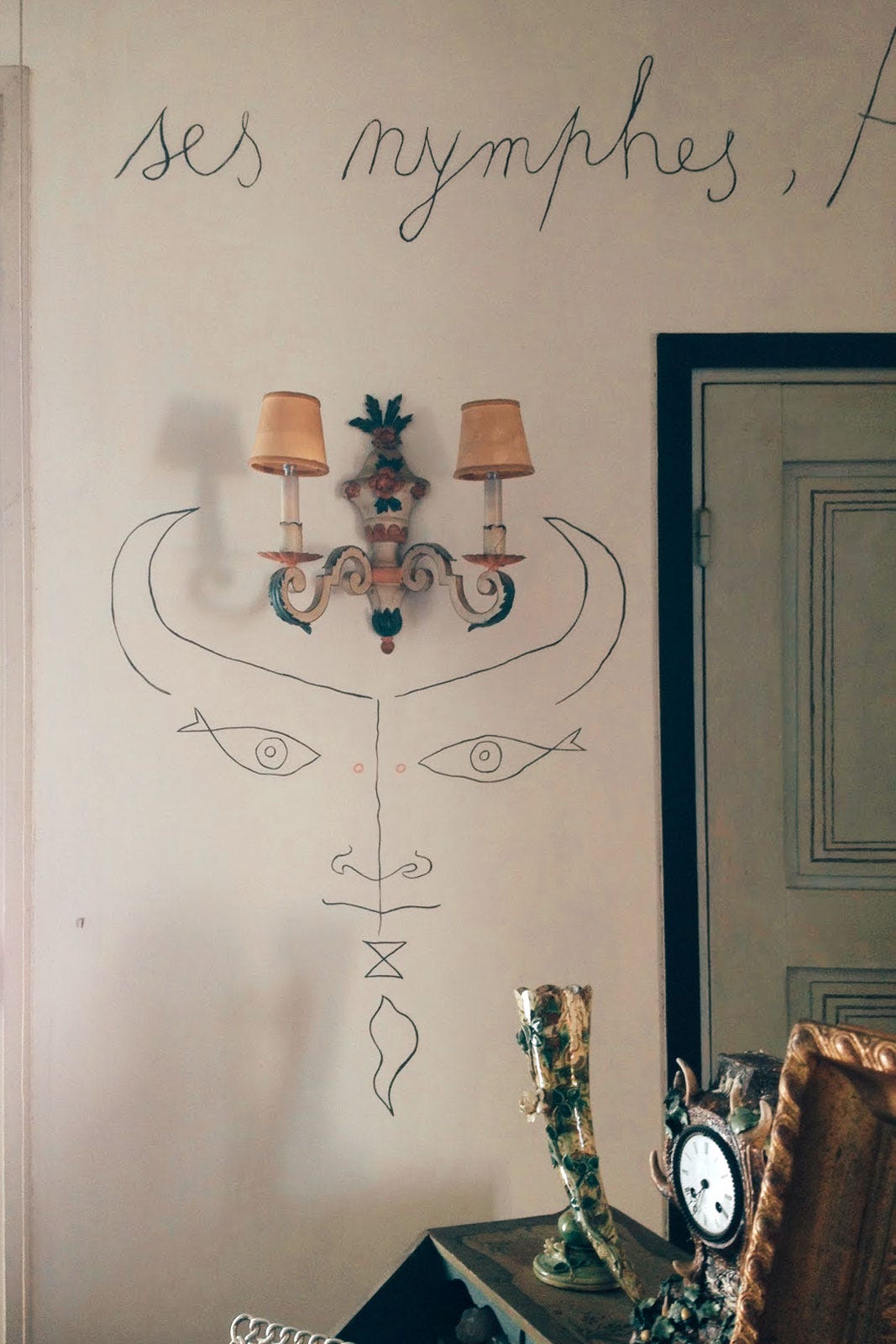

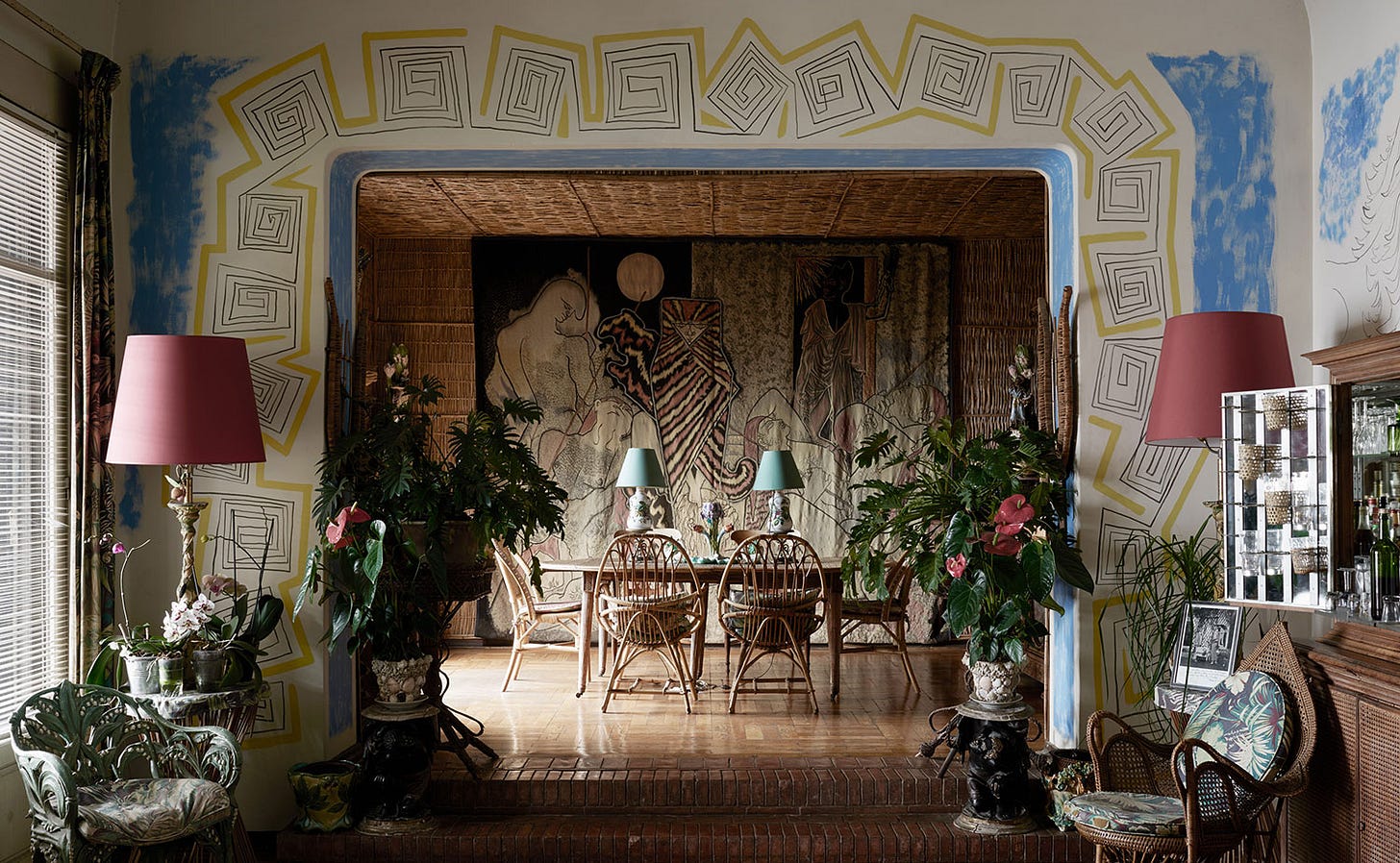
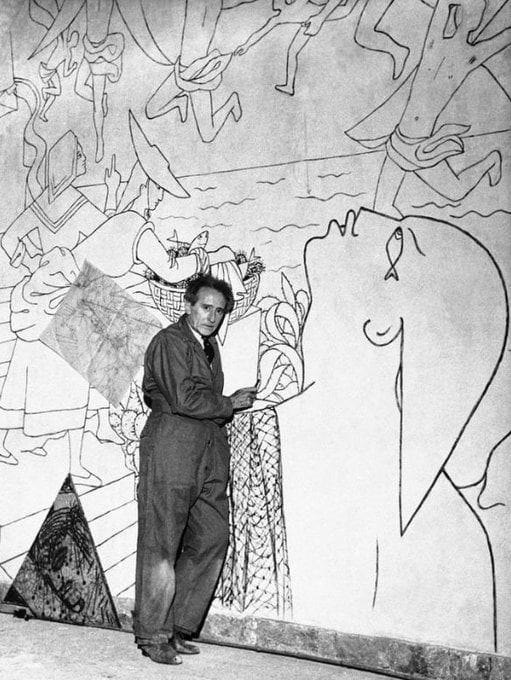
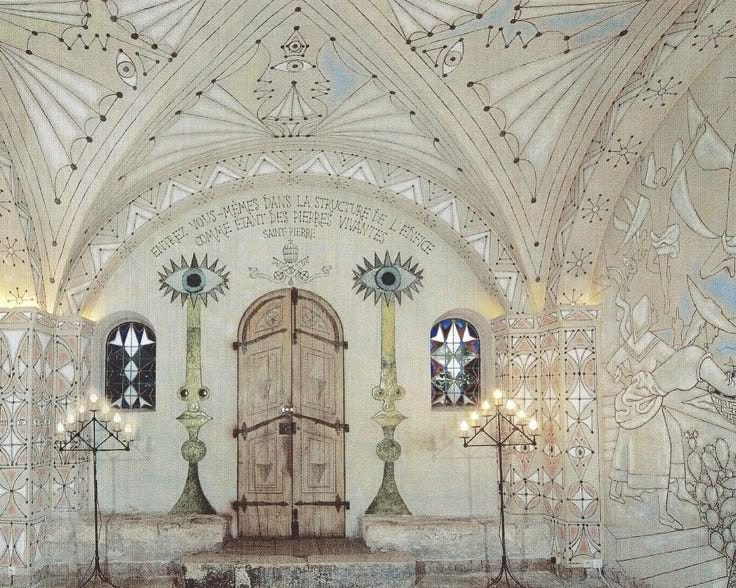
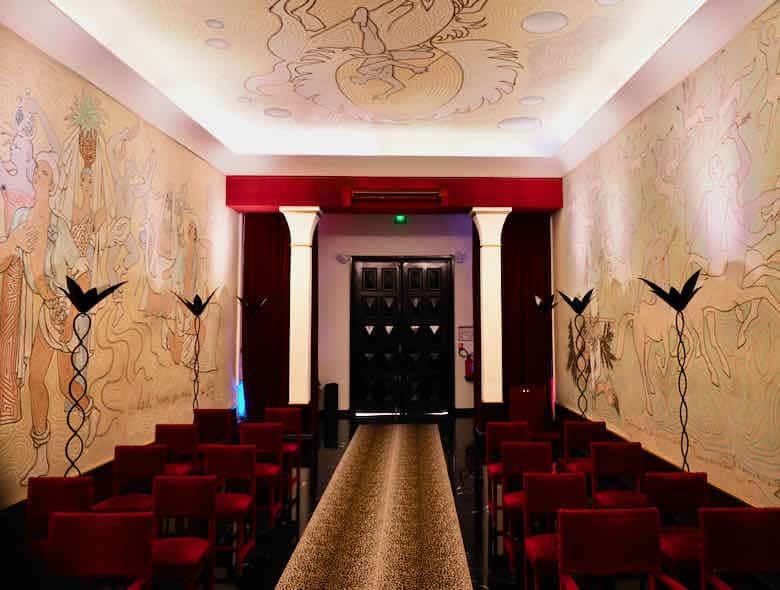




Hi Lauren,
I just wanted to say I really enjoyed your recent article! I actually included it in my latest newsletter because I thought my readers would really appreciate it too!
No pressure to respond—I just wanted to let you know your work resonated with me.
Looking forward to what you publish next!
Warmly,
Lena
This was so beautiful, I’m inspired!! So much joy.